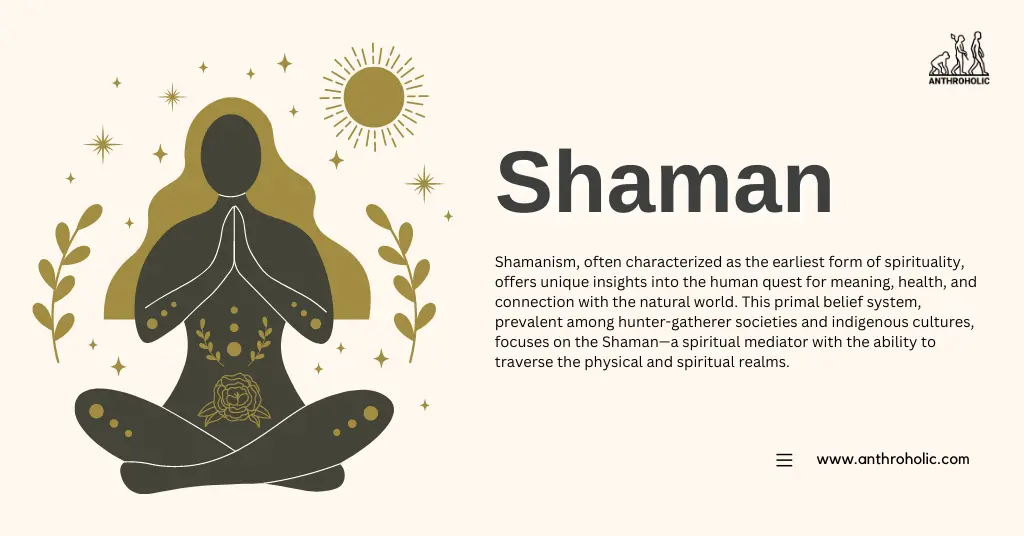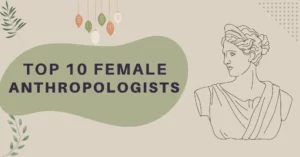AI Answer Evaluation Platform Live Now. Try Free Answer Evaluation Now
Shamanism
Shamanism, often characterized as the earliest form of spirituality, offers unique insights into the human quest for meaning, health, and connection with the natural world. This primal belief system, prevalent among hunter-gatherer societies and indigenous cultures, focuses on the Shaman—a spiritual mediator with the ability to traverse the physical and spiritual realms [1].

The Role of the Shaman
Shamans serve as intermediaries or messengers between the human world and the spirit realms [2]. Their key roles include:
- Healing: Shamans diagnose and treat illnesses, often believed to be caused by malicious spirits. They use techniques like soul retrieval, where the Shaman journeys into the spirit world to recover lost pieces of a patient’s spirit.
- Divination: Shamans predict future events or discover hidden knowledge, often to aid decision-making in their communities.
- Guidance of Spirits: Shamans guide the souls of the deceased to the afterlife, ensuring their peaceful transition.
- Community Rituals: They conduct various rituals and ceremonies, marking important communal events like births, deaths, and harvests.
Shamanic Practices Across the Globe
Shamanism, while similar in core aspects, varies remarkably across cultures.
Siberian Shamanism
Siberian Shamanism, the root from where the term ‘Shaman’ originates, is characterized by the shaman’s distinctive costume—often a robe decorated with representations of spirits and a drum used to induce trance states [3].
Native American Shamanism
In Native American cultures, shamans are known for their vision quests—spiritual journeys into the wilderness to seek guidance from the spirits. Animal spirits or totems play a significant role in their practices [4].
South American Shamanism
In the Amazonian cultures, Shamans utilize sacred plants like Ayahuasca for spiritual healing and insight. Their practices often involve elaborate ceremonies and intricate iconography.
A comparative table illustrating key differences and similarities is presented below:
| Siberian Shamanism | Native American Shamanism | South American Shamanism | |
|---|---|---|---|
| Key Tool | Shamanic Drum | Totems | Ayahuasca |
| Practice | Trance States | Vision Quests | Spiritual Healing |
Shamanism and Modern Society
In recent years, there’s been a resurgence of interest in shamanistic practices, often referred to as “Neo-shamanism”. This contemporary form of shamanism borrows heavily from traditional practices but is tailored to the needs and understandings of modern society.
Advocates argue that Neo-shamanism:
- Provides a holistic approach to mental and physical health.
- Encourages environmental stewardship by promoting a deep connection with nature.
- Offers a spiritual framework that is adaptable and personal, rather than dogmatic.
However, it has also faced criticism for cultural appropriation and lack of authenticity, particularly from the indigenous communities whose practices it borrows from.
Conclusion
Shamanism, as a field of anthropological study, provides rich insights into human spirituality and the historical and cultural diversity of our species. Its recent resurgence in modern society reflects our continued quest for connection, meaning, and healing.
References
[1] Eliade, M. (1964). Shamanism: Archaic Techniques of Ecstasy. Princeton University Press.
[2] Walsh, R. (2007). The World of Shamanism: New Views of an Ancient Tradition. Llewellyn Publications.
[3] Hoppál, M. (2005). Siberian Shamanism: The Shanar Ritual of the Buryats. Akadémiai Kiadó.
[4] Harrod, H. B. (1995). The Animals Came Dancing: Native American Sacred Ecology and Animal Kinship. University of Arizona Press.




